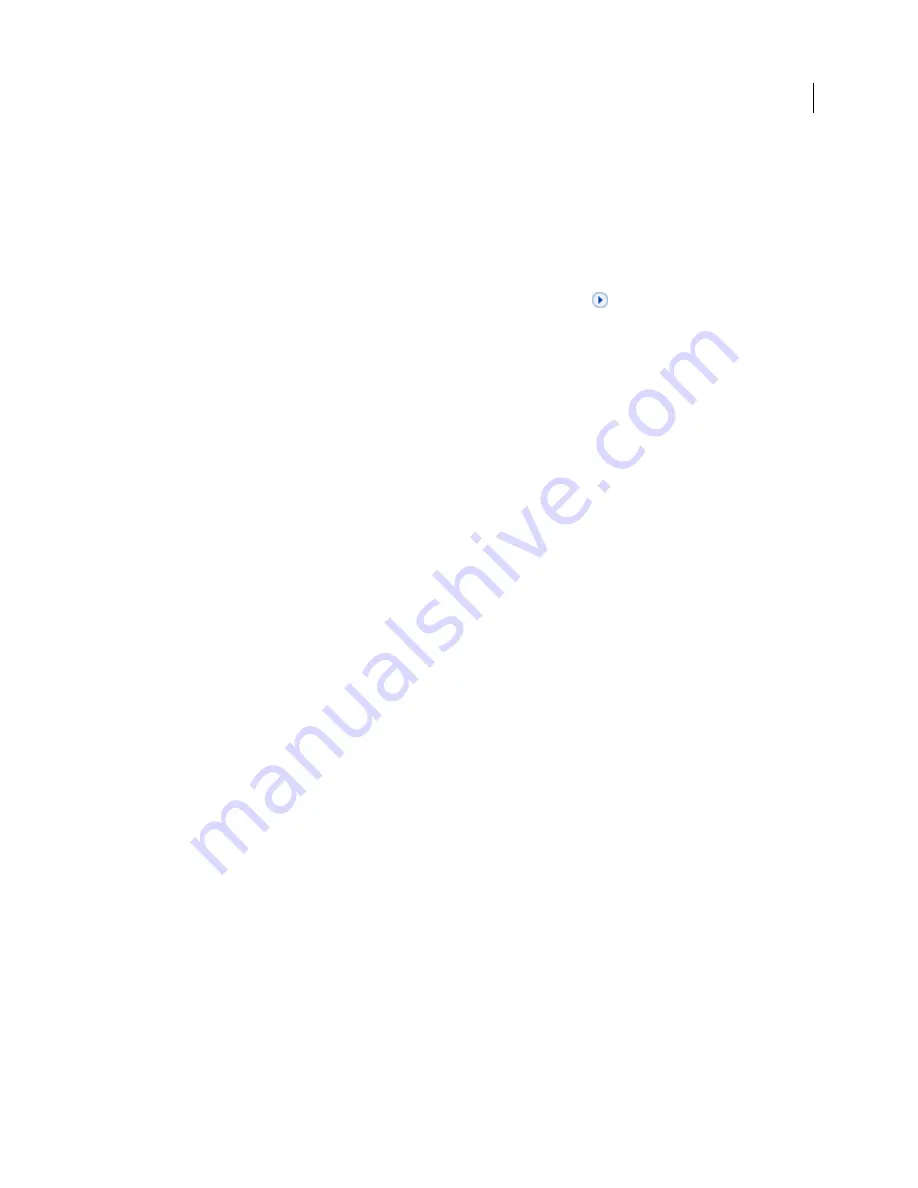
205
USING PHOTOSHOP ELEMENTS 10
Filters, effects, styles, and artwork
Last updated 1/2/2012
More Help topics
“
Using the Effects panel
” on page 196
Texture and glass surface options
The Conté Crayon, Glass, Rough Pastels, Texturizer, and Underpainting filters have texturizing options. These options
make images appear as if they were painted onto textures, such as canvas or brick, or viewed through glass blocks.
Texture
Specifies the type of texture to apply. You can also click Load Texture
to specify a Photoshop file.
Scaling
Increases or decreases the effect on the image surface.
Relief (if available)
Adjusts the depth of the texture’s surface.
Light (if available)
Sets the direction of the light source on the image.
Invert
Reverses the surface’s light and dark colors.
Improve performance with filters and effects
Some filters and effects are memory intensive, especially when applied to high-resolution images. You can use these
techniques to improve performance:
•
Try filters and settings on a small selected area of the image.
•
Try filters and settings on a smaller, resized copy of your image. When you’re satisfied with the results, apply the
filter with the same settings to your original image.
•
Free up memory before running the filter or effect by clearing the clipboard, the undo history, or both. Choose
Edit > Clear >
[command]
.
•
Exit from other applications to make more memory available.
•
Adjust filter settings to make memory-intensive filters less complex. Memory-intensive filters include Lighting
Effects, Cutout, Stained Glass, Chrome, Ripple, Spatter, Sprayed Strokes, and Glass. (For example, to reduce the
complexity of the Stained Glass filter, increase cell size. To reduce the complexity of the Cutout filter, increase Edge
Simplicity, decrease Edge Fidelity, or both.)
More Help topics
“
About photo effects
” on page 198
Artistic filters
Colored Pencil
The Colored Pencil filter redraws an image using colored pencils on a solid background. This filter retains important
edges and gives them a rough crosshatch appearance; the solid background color shows through the smoother areas.
You can set the pencil width, stroke pressure, and paper brightness.
Note:
For a parchment effect, change the background color before applying the Colored Pencil filter to a selected area.






























